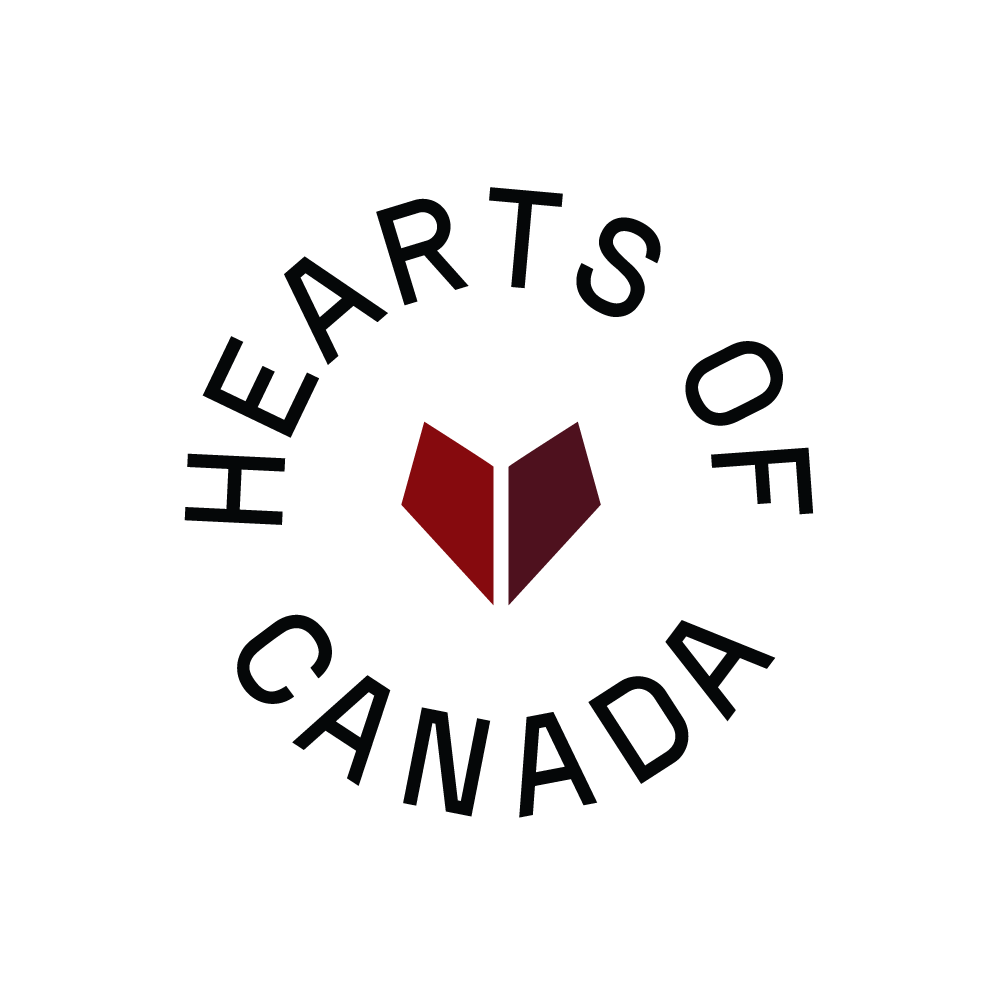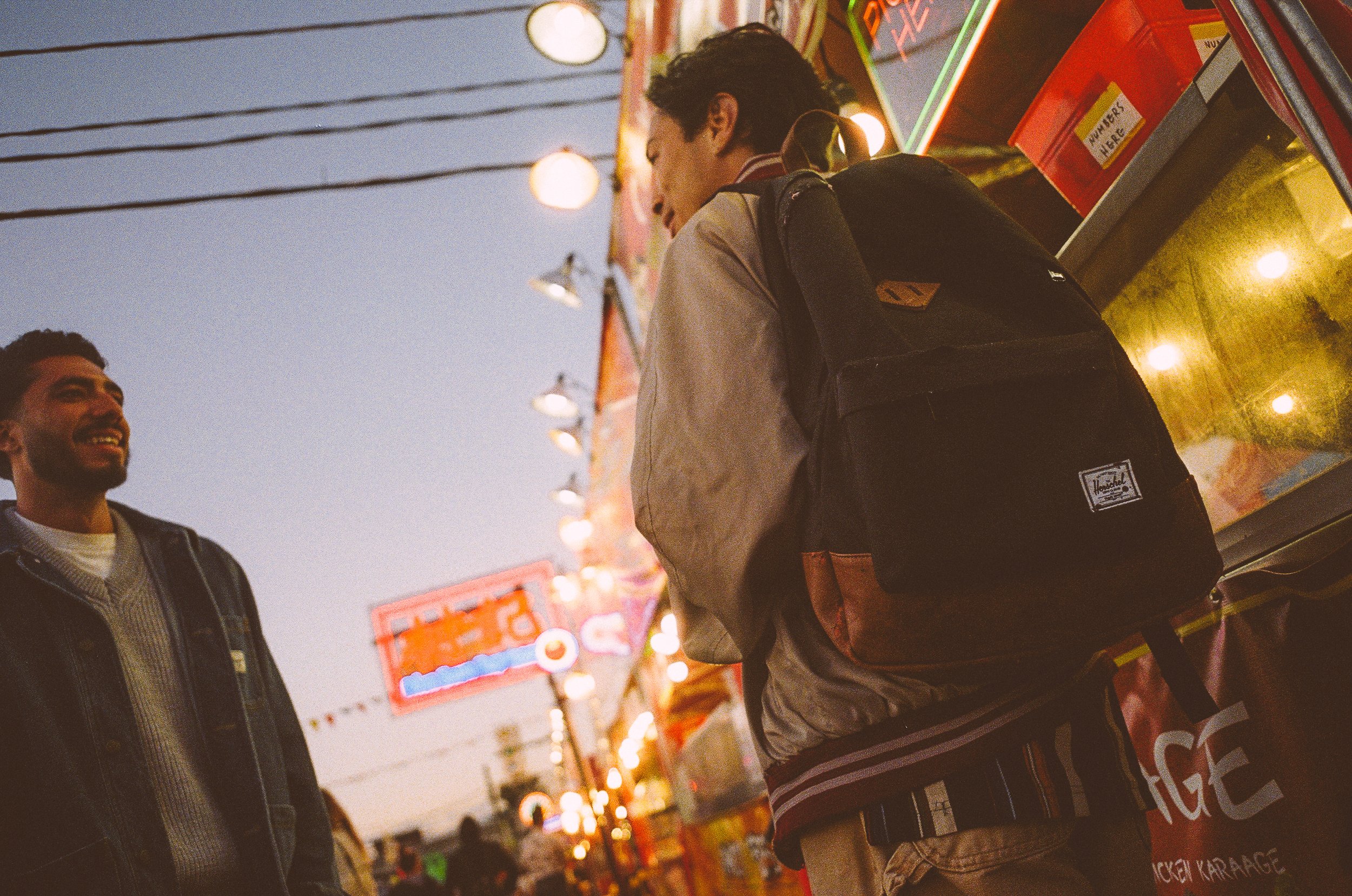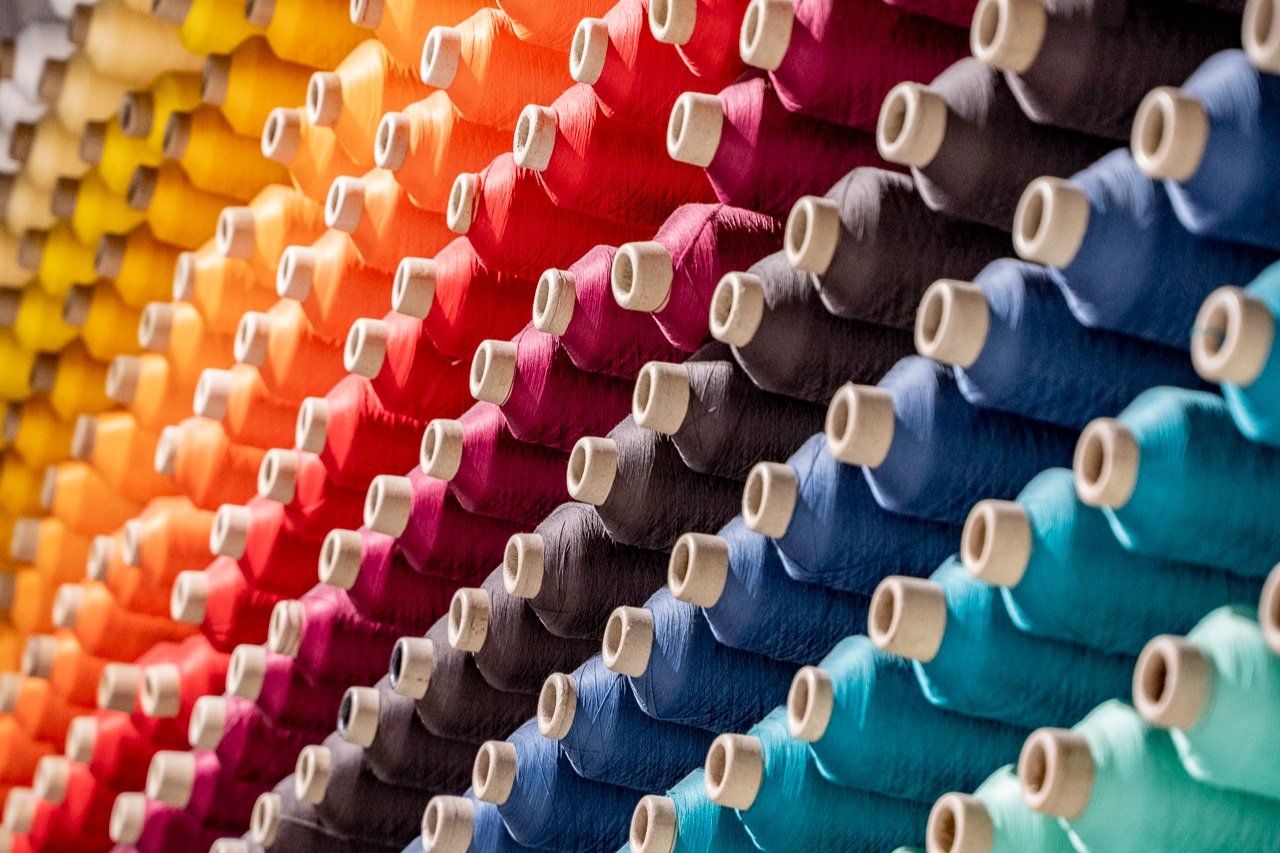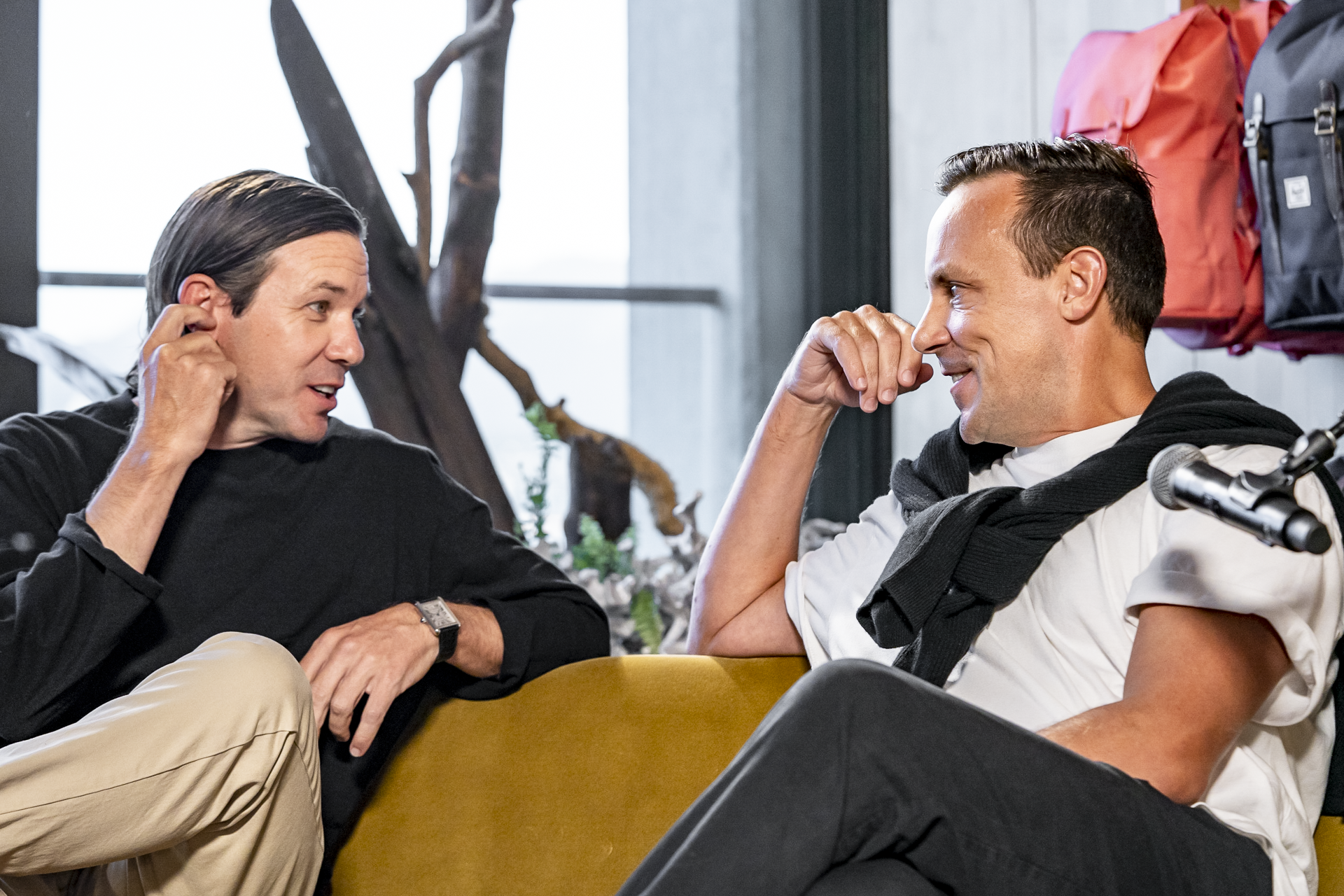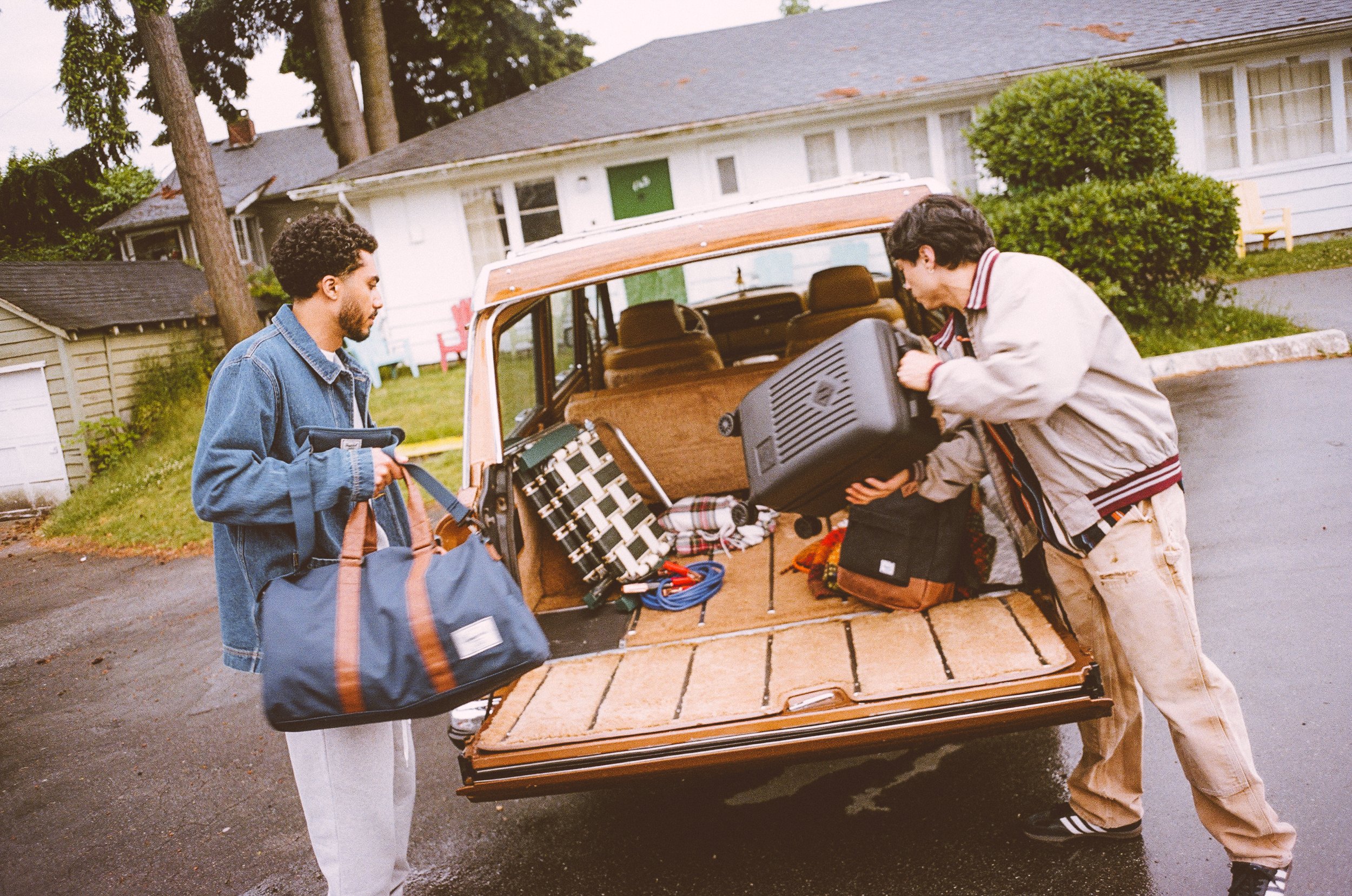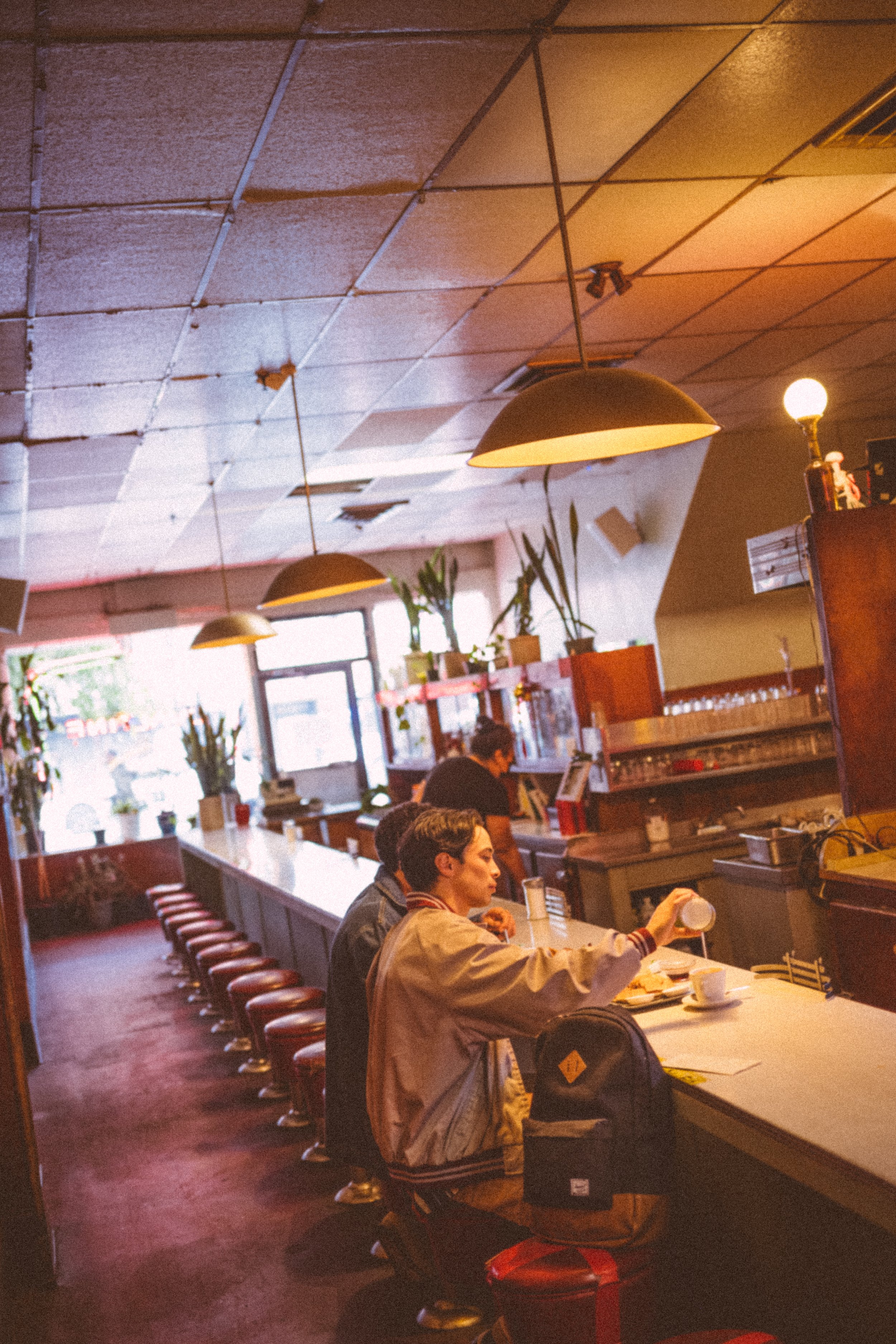JAMIE & LYNDON CORMACK: BROTHERHOOD IN BUSINESS
Brothers and business partners, Jamie & Lyndon Cormack co-founded Herschel Supply Company in 2009, after identifying a gap in the market for stylish, functional, design-forward bags.
In 1906, their great-grandparents—through a homestead program—moved across the Atlantic from Scotland to Canada. They landed on the east coast and made their way across the country, settling on property just outside the little hamlet of Herschel, Saskatchewan. It was here where their father grew up and married his high school sweetheart, their mother.
They grew up mainly in Calgary, Alberta but spent time running free outdoors in Herschel during visits to their grandparents. Team sports and being active were major parts of their upbringing, so it was no surprise they found themselves in sales within the action sports industry as adults —Jamie at KT Sports and Lyndon at Vans. From a young age, both were passionate about design, art, music & culture, something that has only grown stronger since then and is woven deeply into the Herschel ethos.
In 2011, the brothers left their full-time jobs to focus solely on building the company—now a widely known, successful global brand with an engaged community of creatives, artists, travellers, and more across the world.
Design and art are really big parts of your personality. Where do you think that comes from?
JC: If I had to say, it’s travel. I think we were probably always interested in design because we always questioned it, even as kids. Maybe that comes from growing up watching—I’ll go back to the early days of snowboarding or biking when you’re always [doing] sports and skateboarding. It’s how you just build equipment, and in the early days, we cared about how things worked. For me, I like that. I have an engineering mind. I want it all to work. I think the design side for me came from some graphics, apparel and just seeing industries. For me, that was my gateway into reading and researching about art and watching videos and the music comes from that, the culture—we lived it, we earned it. You’re going to shows and doing different things, and it felt like art and design were part of that culture.
LC: I think, to riff off of that, it’s organic when you’re involved in the early days of snowboarding, early days of skateboarding. We probably don’t give it as much credit but also the early days of biking. You see some friends starting silk screen t-shirt brands, you get to see people blow your mind in front of you with the creativity and ideas they’re bringing to life. Bearing witness to that in the early days, when the boundaries or obstacles weren’t as big as some people have today potentially. But the reality is we saw people doing it and, I think from a way back standpoint, our mom always really cared about decorating. She loved a nicely decorated home, it was a country home. I think some of our eclectics come from growing up in a home [decorated country-style]. We were probably having that beautiful healthy tension where we were probably craving modern, but you’re living in country eclectics—mixing and matching things together. We always say our favourite kind of music is the perfect mixtape that will have hip hop, jazz, trip hop and classic rock. How you mix things together is something we’ve both grown up doing organically.
What are some of the bigger challenges that you have been facing in terms of strategizing this next phase of scaling the brand?
LC: The coolest thing about where we’re sitting now is that we have a really solid foundation. When you first launch a brand, the first thing you hear from anybody is, ‘What is this thing? Tell me about it.’ They might like the aesthetic of what you’re doing, but they might not know anything else about it. We have a solid foundation. People know us. We can still introduce [our brand] to people, but we have a really nice brand where people get our aesthetic and what we’re into. The reality now is, how do we continue to grow? We made a decision nineteen, maybe twenty months ago to bring on a CEO named Jon Hoerauf. Jon previously worked earlier in his career at The North Face and ended up president of the local Vancouver brand Arc’teryx—well, a global brand. It was working with Jon when we [began talking] about how we avoid the puddles, the potholes [on the way to] where this brand deserves to go next.
JC: We can’t lie. The last 1,000 days have been the hardest 1,000 days in business ever because so much has changed. From the people, the mindset—the world has changed. We’ve never lived through [a pandemic] prior to that. We’ve never taken a step back as a brand. We’ve always known growth over growth over growth. In the last three years, the world shut down. This brand is the best when people are truly leaving their front door, travelling to festivals and the globe. All of those things were shut down. It’s hard for a brand that wants people to leave the front door, and [everyone is] asked to stay home and isolate. It was three years of really planning. Most companies just probably tried to survive. Internally for us, we hired a new CEO. We made a lot of new hires inside and really worked on the business. We haven’t had that pause in ten years of business until COVID hit to look back. We readjusted things to set us up with a better bench and a better team than we’ve ever had. We redesigned our entire range to be more sustainable and have a positive impact on the globe, which is a mandate for us going forward. We took a ton of time. Today, [now it’s about] how do we bring all of that to market? How do we put all of those people with the right amount of work, with the right priorities, to do the best work they’ve ever done in their lives? I go back to the people and look out for [those] that work for us. Amazing, talented people —the best ones we’ve ever had in-house today and setting them up for true success to grow.
What have you learned from your CEO Jon Hoerauf on how to be a better leader and how to be a better business mind?
JC: Two things. The biggest thing is to share and save space for people. When you’re first starting a brand, you have to make some fast decisions, move momentum—[I’m] stealing that line from Lyndon. In the early days when it was a smaller group, you all reacted at the same time and were bullish through some changes and decisions. Today, with a broader group, it’s about saving space. Sit back and listen as much as you talk. It’s probably the thing that’s helped me the most as a leader.
LC: The focus is really important. When you start a brand, especially the way we started it, we always believe in co-creation—but that usually meant only a couple of us. But how do you co-create with a larger audience? That’s been a really great thing to witness. How do you engage a broader group of people to get to the same goal? We know where our goal is, but there are different paths to get there. I think Jon’s path is different than ours—it’s not violently different, but it’s different. And I think that’s really important. The belief in purpose, values, vision and how you make decisions based upon that is something that, as founders, you just have it in you. You know when you’re making the right decision, you know when you’re acting appropriately, you know when you’re getting out of your comfort zone. But [truly] documenting that—not from Jamie and Lyndon’s Supply Company but Herschel Supply Company. And putting boundaries around that and [understanding]how we make effective decisions, so people understand the ‘why’ very easily. Having that framework is important. To end off on this, Jon reminds people to stay curious as well. He says it often. It’s reminding people that curiosity is fun, and what you can do with it is even more fun when brainstorming about how to do things differently.
Do you think that if you work hard enough, hustle hard enough, and put in the time, you can be successful? Or are there deeper, less talked about things about being an entrepreneur that should be more out in the open?
JC: I think the three biggest things in any business are science, art, and financing. When I say science, I mean business and finance. I think you need some money to start a great idea and truly fund it and support it, to roll with that momentum. The art is the fun part. If I had to say one other thing, make sure the back of the house is as industry-leading as the front of the house. Everything behind the curtain has to be as perfect as the front—and maybe it isn’t in the beginning. We had [an unpalatable] office, and we met people in hotels. Also, it starts with great leaders. Allowing them to hire and build orgs below them to suit their style and to succeed in what we’re asking them to do. Last thing I’ll say: we began delivering [product] in 2010. We kept our jobs for a year and a half, even though we knew we had something pretty special because the right accounts were coming in and we were getting great feedback. We were both feeling pretty confident. For us, it was late nights and early mornings. It was that passion. And passion is the biggest thing. I don’t care if people don’t make money—if you have passion, you’re going to go to bed and get up happy. You have to have passion because there are long days [being an entrepreneur].
LC: The constant thing we’ve heard over the years is, oh, but your timing was perfect. I think with every idea that’s successful, the timing is always perfect. Sometimes that’s engineered, and sometimes you happen to hit it at the right time. There’s no formula. I think sometimes you need to get out there and get it. Be informed enough and have enough knowledge that you’re answering a bunch of your own questions. You need to know that there are obstacles out there and some barriers. Some things are going to stop you in your tracks, and some things you’ll be able to navigate. But if you truly want to bring your idea to life and there’s a community out there that believes in your idea, then it can be wildly successful. We are not the smartest humans in the room, in any room we go to, ever. It’s just that we worked hard, believed in an idea, and thought there was a problem to solve—that bags were boring in general, and we couldn’t find what we were looking for. Sometimes the case is no one is looking for what we are bringing; other times, it just hasn’t been presented before. Sometimes you win, and sometimes you’re going to lose but you’ll learn something. We took the approach that we didn’t bet everything on it and, again, we worked on our day jobs. In hindsight, maybe we should’ve quit sooner and been after it harder earlier on, but it worked out that we’re sitting here. And I think it’s going to continue working out when we look back ten years from now and talk about the next awesome things and new ideas with all the people we get to engage with.
How does a company that is smart, intentional, and compassionate toward its consumers stay relevant when people’s tastes are changing, when the market is changing and the next generation doesn’t want the same things as the generation before it?
LC: I think you just have to stay relevant. You got to [keep] your finger on the pulse, or find people that do. You have to adapt and change, be open to constantly evolving your ideas and trying new things. Failing and learning from your failures, figuring out how to turn losses into wins. If you’re not evolving, you’re dead. And if you’re not changing your processes and the way you did things yesterday…this isn’t cookie-cutter. A business constantly needs feeding.
JC: I’d say the same thing. Refinement, consistency. We’re a classic brand with a modern twist. I love classic brands. And I know there are brands I love today that are going to be around for the next generation. I really hope we’re getting Herschel up to be one of those brands, and that takes refinement. That takes out-of-the-box thinking. You have to be progressive and changing. It’s a drive-thru world out there. No one’s talking about the shoes that dropped yesterday. They’re talking about the five that dropped today. The world is moving so fast and the amount of information we’re getting and how we’re getting that information is changing. It’s [being on] every new platform, but being consistent with your story and message and how you want to do it but in an innovative, progressive way. Through the product lens, it’s the same thing. You constantly have to stay in your lane, know who you are but push boundaries as much as you can. That’s the fun part though. That’s why everyone comes to work every day. I mean, there are rules around Herschel in a sense but I use the word standards. Other than that, let’s go break them. That’s the only way you’ll stay relevant if you break your own rules.
Do you feel that the ability to curate is innate or can be learned, whether it’s curating something in your life or curating a good brand?
LC: If you practice anything enough, generally you’re going to get better at it. So if you’re surrounding yourself with companies and individuals who are good at doing almost anything, naturally you’re going to get better at it. Jamie and I are fairly good curators. We know we can take a whole bunch of ideas and figure out a way to harmonize them together in a way that feels not fake or put together. I don’t know where that skill comes from. It’s just about doing stuff, like making a mixtape back in the day or deciding what to wear, how you decorate your home, or how you merchandise a brand. We’re constantly doing it.
JC: I think more that it’s taught. I think it’s your friend group, the culture, the people you put yourself around, and if you’re actually putting effort in. You’re only going to get out what you put in. And that goes back to earning it. If you want to learn something, you have to put as much effort in as someone is going to give you and you’re going to take out. I think it’s a two-way street. Whatever that task is, that skill is or whatever you want to do, you have to embed yourself in it. You have to jump into it. Embed yourself and earn it.
LC: I get my mind blown every day by someone doing something awesome, whether it’s something you discover online, someone forwards to you, or you witness it in real life. I think that openness to having your mind blown, I crave it. When I see people doing better things than I could have done. That constant craving of always being better, doing better, curating better.
This interview has been edited for length and clarity.
